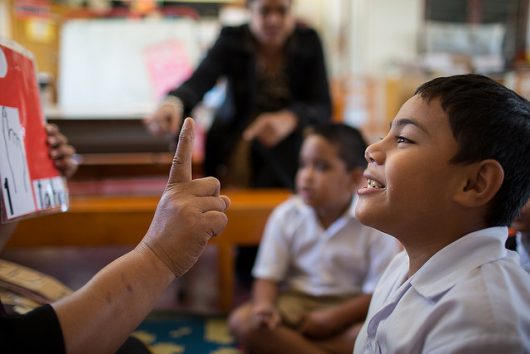Children with Disabilities in Developing Countries

Worldwide, between 93 million and 150 million children have a disability. While research is lacking, children with disabilities in developing countries are common because of disability’s links to poverty. Poverty reduces access to treatment and illness may disallow working abilities. Coupled with a childhood disability, a person may be faced with a life of poverty.
One current study screened for developmental disabilities in low- to middle-income countries. It cited past studies stating the prevalence of developmental disability varied from 0.4 percent to 12.7 percent. The variance is from different definitions of disability and the use of different screening tools. This particular study found that, across 16 developing countries, 20.4 percent of children screened had a developmental impairment.
Children with any disability tend to be the most stigmatized population in many countries. Some cultures shun those with them, believing the ailment is a result of sin or bad luck, or that a disability can be contagious. This leads to the discrimination of disabled children. Additionally, these children are often excluded from programs, education, healthcare, society and family because of the lack of resources and the inability of poor societies to accommodate them.
Access to healthcare is a known issue in low- to middle-income countries. Children with disabilities in developing countries have a higher mortality rate due to lack of basic healthcare. While many medical advances have been made, they are mostly seen in wealthier nations. These nations have seen reductions in disability mortality; however, in developing nations, wealthy families can afford treatment and much of the poor cannot afford assistive devices or treatment needed. There is also little literature on care specific to the disabled population.
Children with disabilities are less likely to attend or finish primary school. Only 10 percent attend and five percent complete primary school. Families may not enroll their disabled child because of low expectations. Schools may be unable to accommodate a disability whether the child is unable to see the blackboard or access the bathroom. Reasons like these prevent children from finishing or attending school.
Poor children are faced with malnutrition, dangerous work conditions, conflict and lack of clean water, making them vulnerable to disabilities. Disability leaves these children excluded from education and job-training opportunities, setting up a cycle of poverty for life.
Despite the injustice children with disabilities in developing countries are experiencing, the social norms are changing positively. Disability is now being seen as a human rights issue. International organizations, such as UNICEF, state that children should not be discriminated against based on disability and that these children have the right to freedom and happiness as others do. Governments are beginning to advocate for the disabled, too. The U.S. and U.K. both have legislation making it illegal to discriminate based on disability.
The World Health Organization (WHO) created specific guidelines to include people with disabilities in the Millennium Development Goals. It recognized that those with disabilities are impacted differently and therefore need different resources. For instance, women with disabilities face more severe discrimination, as do mothers of the disabled. The WHO noted that extra supportive programs are needed for these populations. This trend is continuing in the Sustainable Development Goals.
It is important to see a child with a disability as a child first, to focus on raising the child as a part of society. Childhood is a critical time for development and sets the foundations for adulthood. Building these children up creates stronger adults and better futures for the world.
– Mary Katherine Crowley
Photo: Flickr
